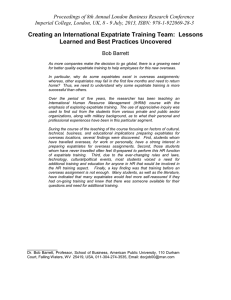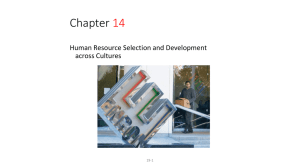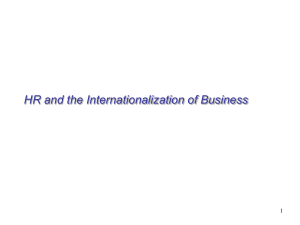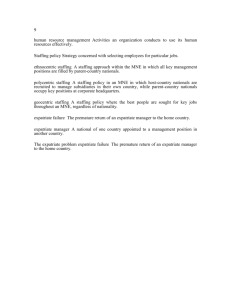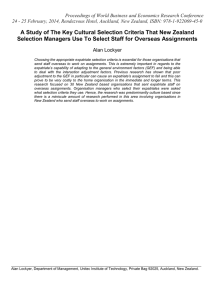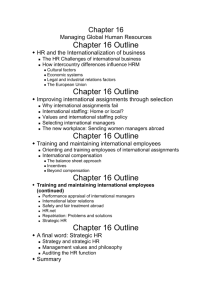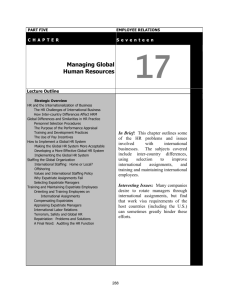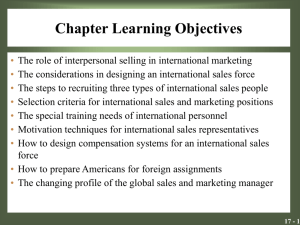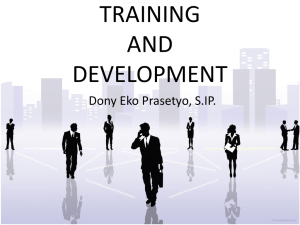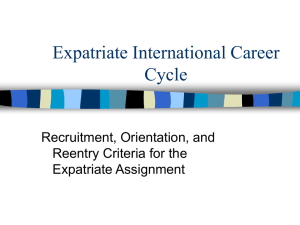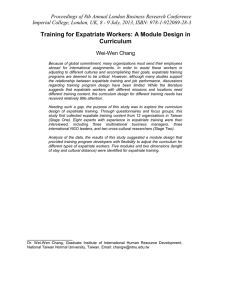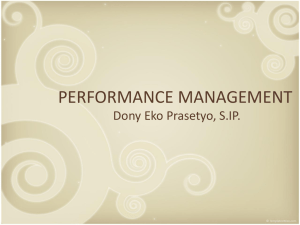Document 10058760
advertisement
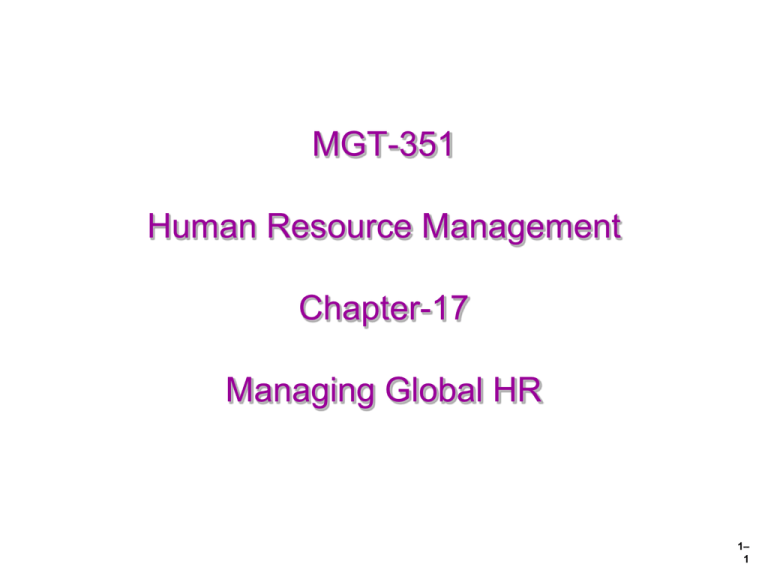
MGT-351 Human Resource Management Chapter-17 Managing Global HR 1– 1 HR and the Internationalization of Business • The Global Challenges Coordinating market, product, and production plans on a worldwide basis. Creating organization structures capable of balancing centralized home-office control with adequate local autonomy. Extending HR policies and systems to service staffing needs abroad. 17–2 Challenges of International HRM • Deployment Easily getting the right skills to where they are needed, regardless of geographic location. • Knowledge and Innovation Dissemination Spreading state-of-the-art knowledge and practices throughout the organization regardless of their origin. • Identifying and Developing Talent on a Global Basis Identifying those who can function effectively in a global organization and developing their abilities. 17–3 Intercountry Differences Affecting HRM Cultural Factors Economic Systems International Human Resource Management Legal and Industrial Relations Factors 17–4 How to Implement a Global HR System • Best practices for making a global HR system more acceptable to local managers: 1. Remembering that global systems are more accepted in truly global organizations. 2. Investigating pressures to differentiate and determine their legitimacy. 3. Working within the context of a strong corporate culture is best. 17–5 A Global HR System (cont’d) • Best practices for developing a more effective global HR system: Form global HR networks that make local HR managers a part of global teams. Remember that it’s more important to standardize ends and competencies than specific methods. • Best practices for implementing the global HR system: Remember, “You can’t communicate enough.” Dedicate adequate resources for the global HR effort. 17–6 Staffing the Global Organization • International staffing: Home or local? Expatriates (expats) Home-country nationals Third-country nationals • Offshoring Having local employees abroad do jobs that the firm’s domestic employees previously did in-house • Offshoring Issues Effective local supervisory/management structure Screening and required training for locals Local compensation policies and working conditions 17–7 Staffing the Global Organization (cont’d) Top Management Values Ethnocentric International Staffing Policy Polycentric Geocentric 17–8 Staffing the Global Organization (cont’d) Inability of Spouse to Adjust Personality Personal Intentions Family Pressures Why Expatriate Assignments Fail Inability to Cope with Overseas Responsibilities Lack of Cultural Skills 17–9 Staffing the Global Organization (cont’d) Realistic Previews Careful Screening Helping Expatriate Assignments Succeed Improved Orientation Cultural and Language Training Improved Benefits Packages 17–10 Selecting Expatriate Managers • Adaptability Screening Assessing the assignee’s (and spouse’s) probable success in handling the foreign transfer. Overseas Assignment Inventory A test that identifies the characteristics and attitudes international assignment candidates should have. • Realistic Previews The problems to expect in the new job, as well as the cultural benefits, problems, and idiosyncrasies of the country. 17–11 Orienting and Training Employees on International Assignment • There is little or no systematic selection and training for assignments overseas. • Training is needed on: The impact of cultural differences on business outcomes. How attitudes (both negative and positive) are formed and how they influence behavior. Factual knowledge about the target country. Language and adjustment and adaptation skills. 17–12 Trends in Expatriate Training • Rotating assignments that permit overseas managers to grow professionally. • Management development centers around the world where executives hone their skills. • Classroom programs provide overseas executives with educational opportunities similar to stateside programs. • Continuing, in-country cross-cultural training. • Use of returning managers as resources to cultivate the “global mind-sets” of their home-office staff. • Use of software and the Internet for cross-cultural training. 17–13 Compensating Expatriates • The “Balance Sheet Approach” Home-country groups of expenses—income taxes, housing, goods and services, and discretionary expenses—are the focus of attention. The employer estimates what each of these four expenses is in the expatriate’s home country, and what each will be in the host country. The employer then pays any differences such as additional income taxes or housing expenses. 17–14 TABLE 17–2 The Balance Sheet Approach (Assumes Base Salary of $80,000) Annual Expense Chicago, U.S. Housing & utilities Brussels, Belgium (U.S.$ Equivalent) Allowance $35,000 $67,600 $32,600 6,000 9,500 3,500 Taxes 22,400 56,000 33,600 Discretionary income 10,000 10,000 0 $73,400 $143,100 $69,700 Goods & services Total Source: Joseph Martocchio, Strategic Compensation: A Human Resource Management Approach, 2nd edition (Upper Saddle River, NJ: Prentice Hall, 2001), Table 12-15, p. 294. 17–15 Incentives for International Assignments • Foreign Service Premiums Financial payments over and above regular base pay, and typically range between 10% and 30% of base pay. • Hardship Allowances Payments to compensate expatriates for exceptionally hard living and working conditions at certain foreign locations. • Mobility Premiums Lump-sum payments to reward employees for moving from one assignment to another. 17–16 Appraising Expatriate Managers • Challenges Determining who should appraise the manager. Deciding on which factors to base the appraisal. • Improving the Expatriate Appraisal Process Stipulate the assignment’s difficulty level, and adapt the performance criteria to the situation. Weigh evaluation more toward the on-site manager’s appraisal than toward the home-site manager’s. If the home-office manager does the actual written appraisal, use a former expatriate from the same overseas location for advice. 17–17 Repatriation: Problems and Solutions • Problem Making sure that the expatriate and his or her family don’t feel that the company has left them adrift. • Solutions Match the expat and his or her family with a psychologist trained in repatriation issues. Make sure that the employee always feels “in the loop” with what’s happening back at the home office. Provide formal repatriation services when the expat returns home. 17–18
